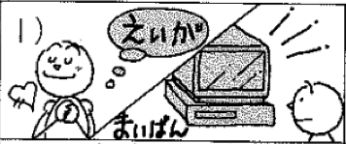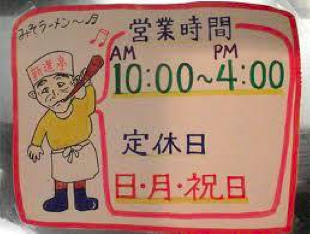Today we finished up on the last section of Lesson #6 and started on Lesson #7. Time is flying by too quickly! I’ve got a new assignment, another 400-word essay about “what I did last weekend”. Sounds pretty exciting, but I’ve got to make it my best composition cause it’s counted towards my grade. Anyway, the last section of Lesson #6 is all about inviting a friend to join you to do an activity, like asking your best friend out to have coffee. Previously we did “doing an activity with a friend”, so this is a step up.
Lesson #7 is the final lesson, and here’s the breakdown of what we will be doing:
- Describe “already” and “not yet”
- Describe “do ~ using ~”
- Family members
- Asking “what’s ~ in Japanese?”
Lesson #6
INVITING SOMEONE
Dialogue between two friends:
A: Why don’t we have coffee together? | Isshoni kohi wo nomimasen ka? | いっしょに コーヒー を のみません か。
B: Sounds good. | E, I desu ne. | ええ、いいですね。
A: Well, let’s go to Starbucks. | Ja, Sutabakkusu e ikimashou.| じゃ、スターバックス へ いきましょう。
B: Wakarimashita. | わかりました
When inviting someone to join you in an activity, the verb needs to be conjugated. In the case of asking “Why don’t we…”, the verb ‘nomimasu’ —> ‘nomimasen’. When signalling to the other person, “let’s go”, the verb ‘ikimasu’ —> ‘ikimashou’
Lesson #7
DESCRIBING “ALREADY | もう” & “NOT YET | まだ”
Q:
Have you already eaten breakfast? | Mou asagohan o tabemashita ka? | もう あさごはん を たべました か。
– – – – – – – – – Yes I already ate. | Hai, mou tabemashita. | はい、もう たべました。
– – – – – – – – – No, not yet. | Ie, mada desu. | いいえ、まだです。
Q:
Have you done your homework already? | Mou shukudai o shimashita ka? |もう しゅくだい を しました か。
– – – – – – – – – Yes I’ve already done it. | Hai, mou shimashita. | はい、もう しました。
– – – – – – – – – No, not yet. | Ie, mada desu. | いいえ、まだ です。
DESCRIBING “USING”
The particle used to describe “by what means” is ‘de | で’. It is also used for transportation like we learnt in Lesson #4. Besides being a direction marker, it is a “means marker”.

Cut paper with/ using scissors. | Hasami de kami o kirimasu. | はさみ で かみ を きります。
There’re two objects in this sentence, and the placement is different from an English one. In English, the object that one is using is placed at the end. In Japanese, this is the opposite. The object that you are using opens the sentence. Literally translated, ‘Hasami de kami o kirimasu’ = “Scissors | using | paper | cut”

Send a report by fax. | Fakusu de repoto o okurimasu. | ファクスで レポートを おくります。

Eat rice using chopsticks. | Ohashi de gohan o tabemasu. | おはしで ごはんを たべます。
Q:
“How” do you eat sushi? |Nan de osushi o tabemasu ka? | なんで おすしを たべますか。
(A literal translation would be “by what means” do you eat sushi?)
– – – – – – – – – I eat using chopsticks. | Ohashi de tabemasu. | おはしで たべます。
– – – – – – – – – I eat using my hands. | Te de tabemasu. | てで たべます。
The particle has many uses, and another important one involves it being used in sentences like “I write a report in Japanese”. The literal translation is “I write a report using Japanese”. Again, the particle ‘de’ is a marker for “using/ with”.
I write a report using Japanese. | Nihongo de repoto o kakimasu. | にほんご で レポートを かきます。
The sentence structure is similar to describing “using” as explained above. The subject that is being used, in this case, Japanese, opens the sentence.
Q:
“Using what” do you write your report? | Nan de repoto o kakimasu ka? | なにごで レポートを かきますか。
– – – – – – – – – I write using Japanese. | Nihongo de kakimasu. | にほんごで かきます。
ASKING “WHAT’S ~ IN JAPANESE”
This section covers how to ask a subject in Japanese. The particle ‘de’ is used as a means marker again.
How do you say “thank you” in Japanese? | “Thank you” wa nihongo de nan desu ka? | “Thank you” わ にほんご で なん です か。
“Thank you” in Japanese is ‘arigatou gozaimasu’. | “Thank you” wa nihongo de ‘arigatou gozaimasu’ desu.|
“Thank you” は にほんごで ‘ありがとう ございます’ です。
Chopstick culture! The Japanese are rather particular about table etiquette, and rightfully so! Here’re some taboos that you should not do when you’re in Japan, or rather, anywhere for that matter; it’s a good idea to cultivate such habits!
おはし マナー:



























